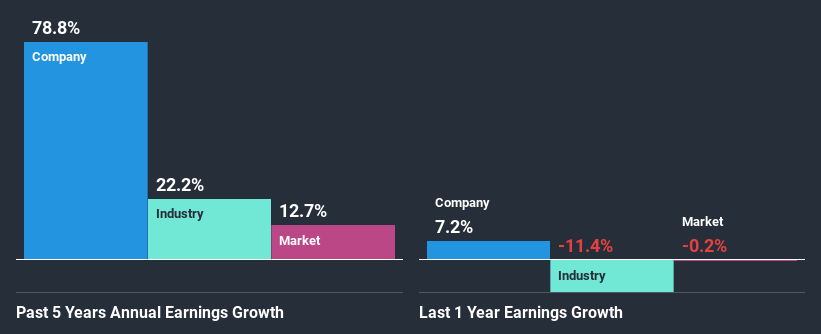Steppe Cement Ltd.'s (LON:STCM) Stock Has Been Sliding But Fundamentals Look Strong: Is The Market Wrong?

Steppe Cement (LON:STCM) has had a rough month with its share price down 9.8%. However, stock prices are usually driven by a company’s financial performance over the long term, which in this case looks quite promising. In this article, we decided to focus on Steppe Cement's ROE.
Return on Equity or ROE is a test of how effectively a company is growing its value and managing investors’ money. In simpler terms, it measures the profitability of a company in relation to shareholder's equity.
View our latest analysis for Steppe Cement
How Is ROE Calculated?
The formula for return on equity is:
Return on Equity = Net Profit (from continuing operations) ÷ Shareholders' Equity
So, based on the above formula, the ROE for Steppe Cement is:
15% = US$9.7m ÷ US$63m (Based on the trailing twelve months to December 2019).
The 'return' is the yearly profit. That means that for every £1 worth of shareholders' equity, the company generated £0.15 in profit.
What Is The Relationship Between ROE And Earnings Growth?
Thus far, we have learned that ROE measures how efficiently a company is generating its profits. Based on how much of its profits the company chooses to reinvest or "retain", we are then able to evaluate a company's future ability to generate profits. Assuming everything else remains unchanged, the higher the ROE and profit retention, the higher the growth rate of a company compared to companies that don't necessarily bear these characteristics.
Steppe Cement's Earnings Growth And 15% ROE
To start with, Steppe Cement's ROE looks acceptable. And on comparing with the industry, we found that the the average industry ROE is similar at 14%. Consequently, this likely laid the ground for the impressive net income growth of 79% seen over the past five years by Steppe Cement. We believe that there might also be other aspects that are positively influencing the company's earnings growth. For instance, the company has a low payout ratio or is being managed efficiently.
Next, on comparing with the industry net income growth, we found that Steppe Cement's growth is quite high when compared to the industry average growth of 22% in the same period, which is great to see.
Earnings growth is an important metric to consider when valuing a stock. It’s important for an investor to know whether the market has priced in the company's expected earnings growth (or decline). This then helps them determine if the stock is placed for a bright or bleak future. One good indicator of expected earnings growth is the P/E ratio which determines the price the market is willing to pay for a stock based on its earnings prospects. So, you may want to check if Steppe Cement is trading on a high P/E or a low P/E, relative to its industry.
Is Steppe Cement Making Efficient Use Of Its Profits?
Steppe Cement's significant three-year median payout ratio of 90% (where it is retaining only 10% of its income) suggests that the company has been able to achieve a high growth in earnings despite returning most of its income to shareholders.
Besides, Steppe Cement has been paying dividends over a period of six years. This shows that the company is committed to sharing profits with its shareholders. Our latest analyst data shows that the future payout ratio of the company over the next three years is expected to be approximately 93%. As a result, Steppe Cement's ROE is not expected to change by much either, which we inferred from the analyst estimate of 14% for future ROE.
Summary
On the whole, we feel that Steppe Cement's performance has been quite good. We are particularly impressed by the considerable earnings growth posted by the company, which was likely backed by its high ROE. While the company is paying out most of its earnings as dividends, it has been able to grow its earnings in spite of it, so that's probably a good sign. With that said, the latest industry analyst forecasts reveal that the company's earnings growth is expected to slow down. Are these analysts expectations based on the broad expectations for the industry, or on the company's fundamentals? Click here to be taken to our analyst's forecasts page for the company.
This article by Simply Wall St is general in nature. It does not constitute a recommendation to buy or sell any stock, and does not take account of your objectives, or your financial situation. We aim to bring you long-term focused analysis driven by fundamental data. Note that our analysis may not factor in the latest price-sensitive company announcements or qualitative material. Simply Wall St has no position in any stocks mentioned.
Have feedback on this article? Concerned about the content? Get in touch with us directly. Alternatively, email editorial-team@simplywallst.com.



